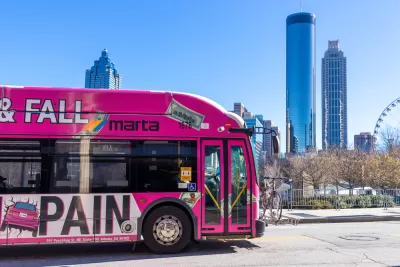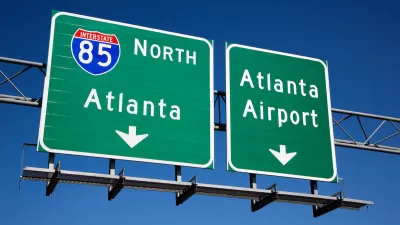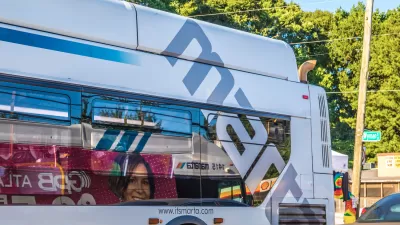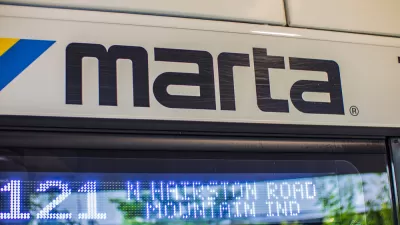MARTA officials argue that bus rapid transit will be faster and more cost-effective than the originally proposed light rail option.

The Metropolitan Atlanta Rapid Transit Authority (MARTA) is downgrading a planned light rail route to bus rapid transit (BRT) in an effort to cut costs, reports Tyler Wilkins in BizJournals.
“The plan involves running buses in dedicated lanes through the Druid Hills and North Decatur areas. The route would travel between the Lindbergh Center and Avondale rail stations.” The agency is also considering an arterial rapid transit (ART) route along Clairemont Avenue, which would put buses in shared lanes with traffic signal prioritization.
“It could cost up to $2.9 billion to construct a light rail line for the project, compared with $1.4 billion for BRT and ART, according to MARTA estimates in 2031 dollars.” Wilkins adds that operational costs are also lower for BRT than rail, and could be completed sooner than a rail line. Ride time would only be around a minute longer on the bus than the train.
“Assuming both BRT and ART routes make it into the final plan, anywhere between $400 million to $800 million is needed for the portion in DeKalb County, according to MARTA's estimates.” The Atlanta portion would be funded by the $2.7 billion More MARTA program, a voter-approved initiative that dedicates a half-cent sales tax increase to transit projects.
FULL STORY: MARTA favors bus over rail for Clifton route in Atlanta, DeKalb County

Planetizen Federal Action Tracker
A weekly monitor of how Trump’s orders and actions are impacting planners and planning in America.

Restaurant Patios Were a Pandemic Win — Why Were They so Hard to Keep?
Social distancing requirements and changes in travel patterns prompted cities to pilot new uses for street and sidewalk space. Then it got complicated.

Map: Where Senate Republicans Want to Sell Your Public Lands
For public land advocates, the Senate Republicans’ proposal to sell millions of acres of public land in the West is “the biggest fight of their careers.”

Maui's Vacation Rental Debate Turns Ugly
Verbal attacks, misinformation campaigns and fistfights plague a high-stakes debate to convert thousands of vacation rentals into long-term housing.

San Francisco Suspends Traffic Calming Amidst Record Deaths
Citing “a challenging fiscal landscape,” the city will cease the program on the heels of 42 traffic deaths, including 24 pedestrians.

California Homeless Arrests, Citations Spike After Ruling
An investigation reveals that anti-homeless actions increased up to 500% after Grants Pass v. Johnson — even in cities claiming no policy change.
Urban Design for Planners 1: Software Tools
This six-course series explores essential urban design concepts using open source software and equips planners with the tools they need to participate fully in the urban design process.
Planning for Universal Design
Learn the tools for implementing Universal Design in planning regulations.
Heyer Gruel & Associates PA
JM Goldson LLC
Custer County Colorado
City of Camden Redevelopment Agency
City of Astoria
Transportation Research & Education Center (TREC) at Portland State University
Camden Redevelopment Agency
City of Claremont
Municipality of Princeton (NJ)





























